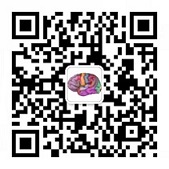Nitrazepam (NZP)
1) The main possible mechanism: GABA-A receptor agonist.
2) Therapeutic indications: It is mainly used for the treatment of epileptic encephalopathy (especially sometimes selected in the treatment of West syndrome).
3) Warning: Patients with leukopenia and myasthenia gravis are forbidden to use. In addition, considering its adverse reactions, its application range is relatively limited (different regions vary greatly, and the drug is no longer used in some regions).
4) Dosage for children: Click to view the dosage for children of different ages and weights.
5) Major adverse reactions in children: Mainly prone to drowsiness, excessive salivation. In addition, long-term use of large amounts of drugs is prone to dependence (usually more than 6 weeks, it is prone to dependence). Withdrawal syndrome may occur when the drug is stopped suddenly. Therefore, if you want to stop the drug, you need to slowly reduce the dose (especially when the initial dose is relatively large, do not stop the drug suddenly).
6) Interaction with other anti-epileptic drugs: Avoid the combined use of drugs with the same sedative effect, such as diazepam, lorazepam, midazolam (but these drugs are generally used for status epilepticus or temporarily for a few days in a short time, and generally will not be used for a long time), clonazepam, phenobarbital, chlorbazam, etc.
7) Interaction with non-anti-epileptic drugs: 1. Alcohol will increase its sedative effect and should be avoided. In addition, the combined use of anesthetics, clonidine, analgesics, phenothiazines, monoamine oxidase type A inhibitors, and tricyclic antidepressants will enhance each other's effects, and the dosage needs to be adjusted. 2. It will increase the antihypertensive effect of antihypertensive drugs. 3. It will reduce the efficacy of levodopa. 4. When combined with propranolol, it can lead to changes in the type and / or frequency of seizures.
Nitrazepam Instruction
EMC.

 English
English  简体中文
简体中文 